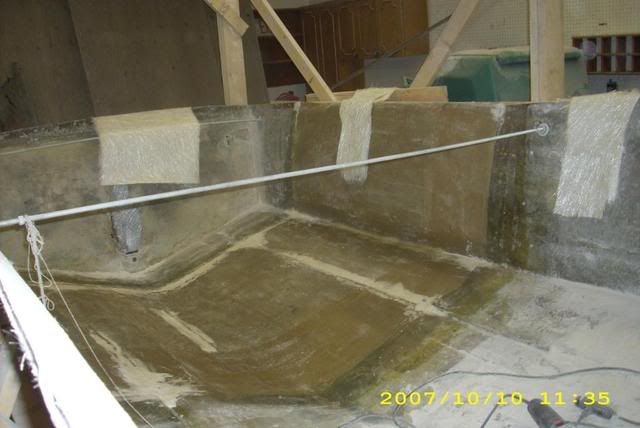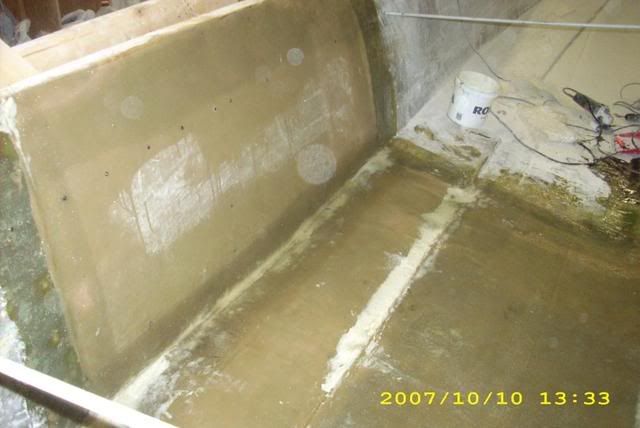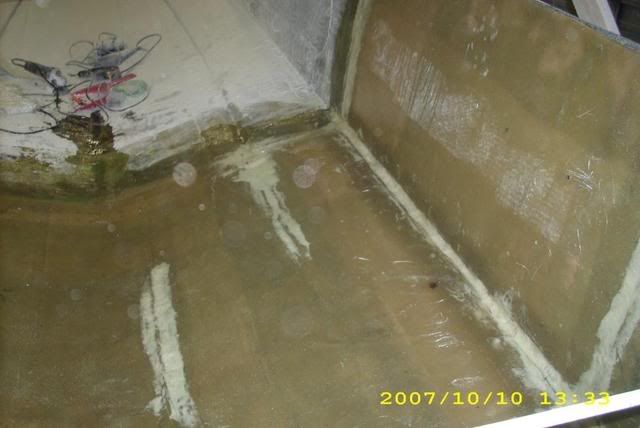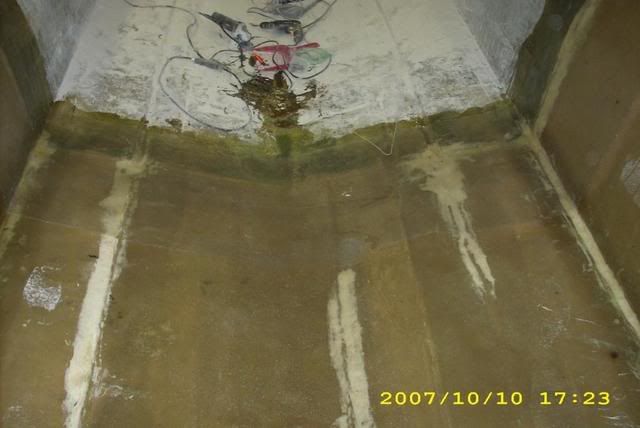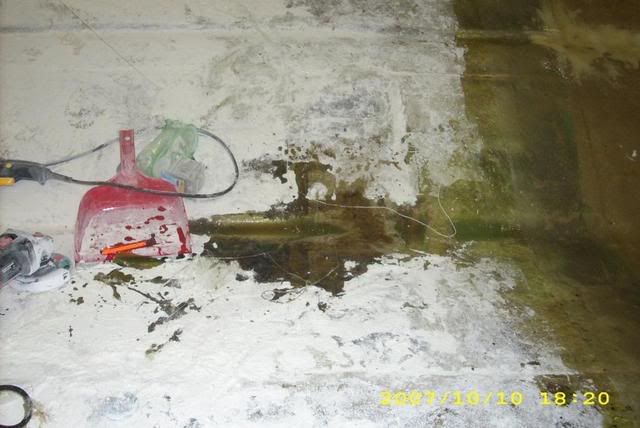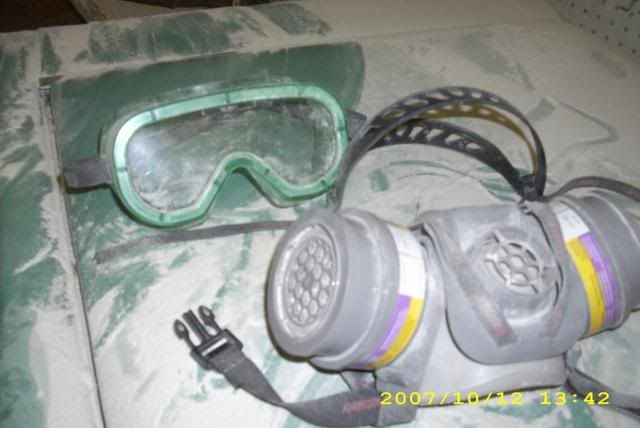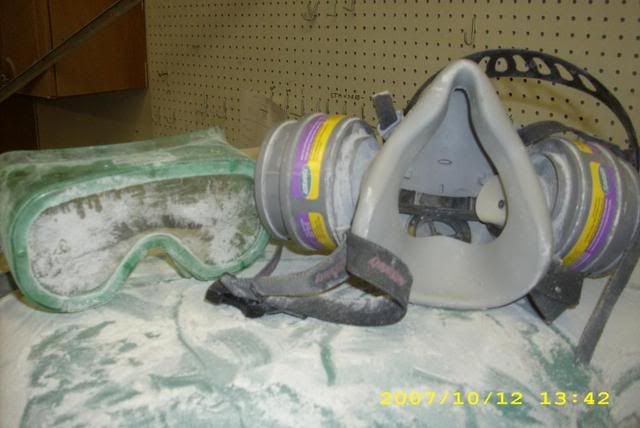JustJason
Vice Admiral
- Joined
- Aug 27, 2007
- Messages
- 5,361
Re: hull extension in progress with picks
Re: hull extension in progress with picks
Oooops...
I know I chimed in earlier about the hull not being necessarily seaworthy. I'd like to take a minute to finish up on that comment. I know you said you've put alot of research into it, and i'd like to congradulate you for having a very big set of balls, because this is something most people wouldn't try.
Here are some of the issues I see that you may or may not already know. My main goal here in writing this is not to "1 up you" or "prove my knowledge", but rather to make sure all my fellow boaters are safe.
i'll start with this.
There are so many types of resin, and so many grades within those types. With your boat being 40 years old you'll never truelly know what type and grade was used. (can you tell the difference between a polyester and vinylester layup?? I can't). The older boats weren't build with CAD, very few used presses, or vacuum bagging, and there was very little math was involved. It was more seat of the pants type job, much like the one you are partaking in now.
You know that (or have found out) that you can't put polyester over epoxy. But you can put epoxy over polyester with good bonding. You also can't put polyester over vinylester, but vinylester over polyester is still very good. Polyester over polyester is structurally the weakest bond. I know that your original hull isn't epoxy... but how do you know it's not vinylester?
Another problem with everything fiberglass. Is it does absorb microscopic amounts of water. 40+ years of who knows what, the hull will never be dry. As a rule of thumb, new poly work does not stick well to old poly work.
When they built the boat they probably had a specific thickness for the layup, and it would have went something like this.
Transom, 1 1/2 inches of marine ply + 5mil of mat on outside + 3 mil of mat inside
Keel, 7 mil's mat glass, stem to stern
Pad, 8 mil's glass
Gunwale, 6mil mat
Top deck, 4 mil non load bearing, 6 mil load bearing....
The point is, your boat, every parameter was built around an XX foot length for a runabout style of the times. But now your adding length to XX feet. Even if your work was dead on perfect using the best products, tools, and techniques... The rest of the boat may not be able to handle the extra weight, load, and leverage. The boat may break, but not on your work, but in front of your work.
Speaking of fiberglass grades. Where are you getting your glass? The stuff at home depot and autoparts stores is junk for construction, it's only good for finishing. If you haven't already. Get a gallon from the home store and get a gallon from a supplier, it's almost like working with 2 completely different products.
Another thing that I see in your construction is your glass choice. Your using this mat/weave hybrid. In construction work you should only use mat. weave is for finnish work. And similar to plywood construction, you should use alot of thin layers instead of 2 or 3 thick layers. The other thing you need to take into consideration is the glass itself between the mat. If the layer of glass infused mat in 2mils, but you have a 1 mil layer of pure hardened glass inbetween the next layup of mat, it's not going to bond well.
There are a bunch of reasons to vacuum bag and mold press, and each have their own advantages and disadvantages, but eithe route is better than hand laying. When hand laying you tend to use a whole lot of extra resin to get saturation, but to much saturation is no good. Ideally you would lay a layer, vac or press it. When it cures up you roughen up to surface to almost rip some of the top weave out. then lay up another layer of mat. The nice thing about mat is is that it's omnidirectional, and you can lay the sheets whatever way you want to.
Yet another issue is see is where you actually decided to do the "stretch". Your placing the weakest material of the boat under where the motor is going to be. It doesn't matter if you go sterndrive or inboard, the motor is going to sit on top of your work. On top of that, it's the last 1/3 of the boat that gets 90% of the stress put on it while underway. I know you talked about overlapping the layers. But overlap doesn't mean a thing on a 40 year old boat. The new matting sould run 100% over the old. When the boat was built, the hull was built in vey long layers of full length mat., not 6 inches of overlap here and there.
anyways that's all for now... i'm tired. I'm sure there will be more to follow at a later date.
happy boating oops.
Jason
Re: hull extension in progress with picks
Oooops...
I know I chimed in earlier about the hull not being necessarily seaworthy. I'd like to take a minute to finish up on that comment. I know you said you've put alot of research into it, and i'd like to congradulate you for having a very big set of balls, because this is something most people wouldn't try.
Here are some of the issues I see that you may or may not already know. My main goal here in writing this is not to "1 up you" or "prove my knowledge", but rather to make sure all my fellow boaters are safe.
i'll start with this.
There are so many types of resin, and so many grades within those types. With your boat being 40 years old you'll never truelly know what type and grade was used. (can you tell the difference between a polyester and vinylester layup?? I can't). The older boats weren't build with CAD, very few used presses, or vacuum bagging, and there was very little math was involved. It was more seat of the pants type job, much like the one you are partaking in now.
You know that (or have found out) that you can't put polyester over epoxy. But you can put epoxy over polyester with good bonding. You also can't put polyester over vinylester, but vinylester over polyester is still very good. Polyester over polyester is structurally the weakest bond. I know that your original hull isn't epoxy... but how do you know it's not vinylester?
Another problem with everything fiberglass. Is it does absorb microscopic amounts of water. 40+ years of who knows what, the hull will never be dry. As a rule of thumb, new poly work does not stick well to old poly work.
When they built the boat they probably had a specific thickness for the layup, and it would have went something like this.
Transom, 1 1/2 inches of marine ply + 5mil of mat on outside + 3 mil of mat inside
Keel, 7 mil's mat glass, stem to stern
Pad, 8 mil's glass
Gunwale, 6mil mat
Top deck, 4 mil non load bearing, 6 mil load bearing....
The point is, your boat, every parameter was built around an XX foot length for a runabout style of the times. But now your adding length to XX feet. Even if your work was dead on perfect using the best products, tools, and techniques... The rest of the boat may not be able to handle the extra weight, load, and leverage. The boat may break, but not on your work, but in front of your work.
Speaking of fiberglass grades. Where are you getting your glass? The stuff at home depot and autoparts stores is junk for construction, it's only good for finishing. If you haven't already. Get a gallon from the home store and get a gallon from a supplier, it's almost like working with 2 completely different products.
Another thing that I see in your construction is your glass choice. Your using this mat/weave hybrid. In construction work you should only use mat. weave is for finnish work. And similar to plywood construction, you should use alot of thin layers instead of 2 or 3 thick layers. The other thing you need to take into consideration is the glass itself between the mat. If the layer of glass infused mat in 2mils, but you have a 1 mil layer of pure hardened glass inbetween the next layup of mat, it's not going to bond well.
There are a bunch of reasons to vacuum bag and mold press, and each have their own advantages and disadvantages, but eithe route is better than hand laying. When hand laying you tend to use a whole lot of extra resin to get saturation, but to much saturation is no good. Ideally you would lay a layer, vac or press it. When it cures up you roughen up to surface to almost rip some of the top weave out. then lay up another layer of mat. The nice thing about mat is is that it's omnidirectional, and you can lay the sheets whatever way you want to.
Yet another issue is see is where you actually decided to do the "stretch". Your placing the weakest material of the boat under where the motor is going to be. It doesn't matter if you go sterndrive or inboard, the motor is going to sit on top of your work. On top of that, it's the last 1/3 of the boat that gets 90% of the stress put on it while underway. I know you talked about overlapping the layers. But overlap doesn't mean a thing on a 40 year old boat. The new matting sould run 100% over the old. When the boat was built, the hull was built in vey long layers of full length mat., not 6 inches of overlap here and there.
anyways that's all for now... i'm tired. I'm sure there will be more to follow at a later date.
happy boating oops.
Jason




















